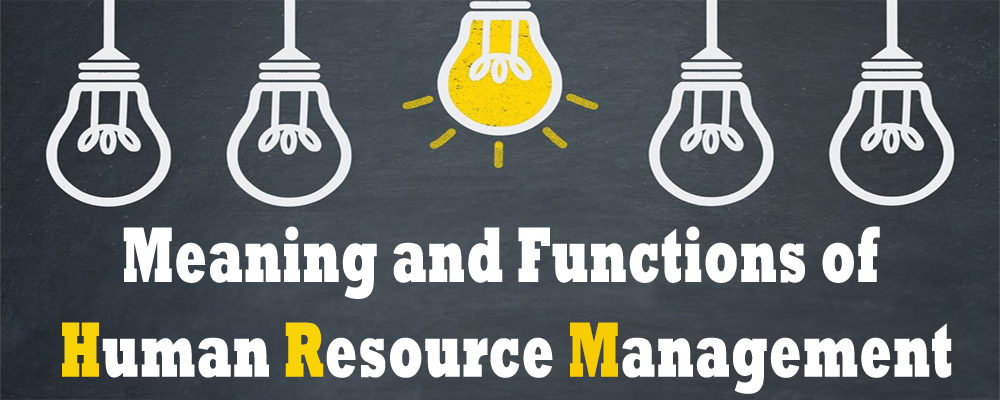The below-mentioned article provides a full explanation of the Meaning and Functions of Human Resource Management…
Meaning of Human Resource Management
Human Resource Management (HRM) may be defined as set policies, practices, and programmed designed to maximize both personal and organizational goals. It is the process of coordinating the people and other organization members together so that achievement of their objectives.
It is also the combination or integration of management functions like planning, organizing, directing, and controlling.
Functions of Human Resource Management
Management of human resources consists of several inter-related functions. These functions are common to all organizations through every organization may have its own human resource management may broadly be classified into two categories…
(i) Managerial functions,
(ii) Operating functions.
Managerial Functions
This is the first or primary function of Human Resource Management and it means, managing people is the essence of being a manager. Like other individuals and other organizational individuals focuses on the performance of the functions of planning, organizing, directing, and controlling.
- Planning
This is the first or primary part and it means is the process of deciding the goals and formulating policies and programmes to achieve the goals.
- Organizing
This is the second or secondary part and it means in order to implement the plans, a sound organization structure is required. An organization is a process of allocating tasks among the members of the group, establishing authority-responsibility relationships among them and integrating their activities towards the common objectives.
- Directing
This is the third or territory part and it means is the process of motivating, activating, leading, and supervising people. It includes all those schemes by which a manager influences the actions of subordinates.
- Controlling
This is the fourth part and it means it implies checking, verifying, and regulating to ensure that everything occurs in conformity with the plans adopted and the instructions issued. It includes auditing training programmers, directing morale surveys, and human relations in the organization.
Operating Functions
The operative or service functions of human resource management are concerned with specific activities of procuring, developing, compensating, and maintaining an efficient workforce.
- Procurement Function
This is the first or primary part of an operating function and it means it is concerned with securing and employing the right kind and a proper number of people required to accomplish the organizational objectives.
(i) Job Analysis
(ii) Human Resource Planning
(iii) Recruitment
(iv) Selection
(v) Placement
(vi) Orientation
- Development Function
This is the second or secondary part of an operating function and it means Human Resource Development is the process of improving the knowledge, skills, aptitudes, and values of employees so they can perform the present and future jobs more effectively. This function comprises the following activities:
(i) Performance Appraisal
(ii) Training
(iii) Executive Development
(iv) Career Planning and Development
- Compensation Function
This is the third or territory part of an operating function and it means it refers to providing equitable and fair remuneration to employees for their contribution to the attainment of organizational objectives. It consists of the following activities:
(i) Job Evaluation
(ii) Wage and Salary Administration
(iii) Bonus
- Integration Function
This is the fourth part of an operating function and it means is the process of reconciling the goals of the organization with those of its members. It involves motivating employees through various financial and non-financial incentives, providing job satisfaction, collective bargaining, employee counseling, and so on.
- Maintenance Function
This is the fifth part of an operating function and it means is concerned with protecting and promoting the physical and mental health of employees. For this purpose, several types of fringe benefits, such as housing, aid, educational facilities, conveyance facilities, and so on are provided to employees and individuals of an organization.
Hello, This is Harsh Shah Website and this is a bit off about him. He is a Best and Professional Author, Social Media and Content Marketing, The SEO Analysis of Marketing Profs. That`s enough for more details please so him at social media and contact him.
